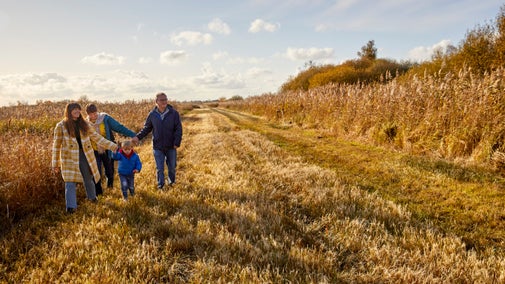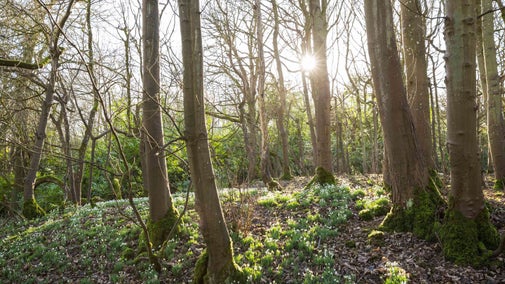
Discover more at Wicken Fen
Find out when Wicken Fen is open, how to get here, things to see and do and more.

Wicken Fen Nature Reserve covers around 2,000 acres of varied landscape that's ideal for exploring and learning about the wildlife that lives here. Whether you're taking a scenic walk to the historic windpump, exploring the ancient Sedge Fen, or visiting the Konik ponies and Highland cattle, your adventure in nature starts here.
The historic part of Wicken Fen is a National Nature Reserve and one of the 0.1% remaining fenland in the region that has never been drained.
Walk one of the trails, including the all-weather boardwalk, for getting right into the heart of this special place, a remnant of a lost landscape. The vegetation growing on the deep peat here is cut in strips on a four-year rotation, allowing wildlife and fen flowers to flourish.
Get a bird’s-eye view from our Tower Hide in the summer months, and out across the landscape. (Please note there are steep, narrow stairs to climb to the top.)
On the edge of the Sedge Fen side of the reserve, this area of young woodland is great for family exploration, accessible for pushchairs and wheelchairs.
Spend time getting closer to nature in our '50 things to do before you're 11¾' area, and see how many butterflies you can spot in the sunny glades. This path is open all year round. Take the path from the Roger Clarke Hide on the Boardwalk, having spent some time there looking to see what birds are on the reed-fringed brickpit pond.
South of Wicken Lode, follow the Lodes Way cycle path, and footpaths along the banks and droves, to explore the area around the Mere, reedbeds and our newer areas of wet grassland.
The wider reserve is grazed by Konik ponies and Highland cattle all year round in their natural family groups. As they roam freely, pop into the Visitor Centre to find out where they were last seen before heading out.
The wider reserve is great for bird spotting too, whether winter owls and fowl, or autumnal waders; in springtime keep an ear open to hear the elusive bitterns booming.

Wicken Fen's iconic windpump stands on the edge of Sedge Fen, a reminder of the former peat-digging industry that was once widespread in the area. Before the advent of steam and diesel-pumping engines, windpumps were the main method used to drain turf pits and fields.
The Wicken Fen windpump eventually fell into disrepair, but was extensively restored and moved to its current location in 1956. Much of the restoration was paid for by Lord Fairhaven, the former owner of nearby Anglesey Abbey.
The National Trust has recently undertaken a major project to conserve the pump’s waterwheel. Over the years, the wood had deteriorated in the wet environment and it needed replacing. A new wheel has been constructed, while the original metal fittings have been re-installed, securing the long-term future of this iconic piece of machinery.
Duck your head as you look inside historic Fen Cottage to discover how people lived and worked on the fen in days gone by. The cottage is one of the last surviving buildings of a once thriving hamlet whose residents lived and worked on the fen.
Built in various stages from the late 18th to early 20th century, it was constructed from local materials including peat, wood, sedge, reed and clay, much of which would have been harvested or gathered from the fen. Originally it was two separate cottages which were knocked into one in 1925.

Find out when Wicken Fen is open, how to get here, things to see and do and more.
Visit the Docky Hut Café and try our freshly baked sausage rolls and hot snacks or buy a gift in the shop as a souvenir of your visit.

Explore the fens on two wheels or on foot. Enjoy an easy family ride to see Konik ponies or discover the wildlife in the wider reserve.

We’ve cared for Wicken Fen National Nature Reserve for over 125 years. Discover its history and how we continue to look after this very special place.

Plan a visit to one of the special countryside places in our care and discover the benefits of being in the great outdoors. Pack your walking boots and get ready to explore woodlands, valleys and rivers.

Explore some of the finest landscapes in our care on coastal paths, accessible trails, woodland walks and everything in between. Find the best places to walk near you.

With distinctive fenland landscapes, grand houses and lush farmland, discover all there is to see at National Trust places in Cambridgeshire, in East Anglia.
